Lingyang Song
RadioFormer: A Multiple-Granularity Radio Map Estimation Transformer with 1\textpertenthousand Spatial Sampling
Apr 27, 2025Abstract:The task of radio map estimation aims to generate a dense representation of electromagnetic spectrum quantities, such as the received signal strength at each grid point within a geographic region, based on measurements from a subset of spatially distributed nodes (represented as pixels). Recently, deep vision models such as the U-Net have been adapted to radio map estimation, whose effectiveness can be guaranteed with sufficient spatial observations (typically 0.01% to 1% of pixels) in each map, to model local dependency of observed signal power. However, such a setting of sufficient measurements can be less practical in real-world scenarios, where extreme sparsity in spatial sampling can be widely encountered. To address this challenge, we propose RadioFormer, a novel multiple-granularity transformer designed to handle the constraints posed by spatial sparse observations. Our RadioFormer, through a dual-stream self-attention (DSA) module, can respectively discover the correlation of pixel-wise observed signal power and also learn patch-wise buildings' geometries in a style of multiple granularities, which are integrated into multi-scale representations of radio maps by a cross stream cross-attention (CCA) module. Extensive experiments on the public RadioMapSeer dataset demonstrate that RadioFormer outperforms state-of-the-art methods in radio map estimation while maintaining the lowest computational cost. Furthermore, the proposed approach exhibits exceptional generalization capabilities and robust zero-shot performance, underscoring its potential to advance radio map estimation in a more practical setting with very limited observation nodes.
WiFi-Diffusion: Achieving Fine-Grained WiFi Radio Map Estimation With Ultra-Low Sampling Rate by Diffusion Models
Mar 15, 2025Abstract:Fine-grained radio map presents communication parameters of interest, e.g., received signal strength, at every point across a large geographical region. It can be leveraged to improve the efficiency of spectrum utilization for a large area, particularly critical for the unlicensed WiFi spectrum. The problem of fine-grained radio map estimation is to utilize radio samples collected by sparsely distributed sensors to infer the map. This problem is challenging due to the ultra-low sampling rate, where the number of available samples is far less than the fine-grained resolution required for radio map estimation. We propose WiFi-Diffusion -- a novel generative framework for achieving fine-grained WiFi radio map estimation using diffusion models. WiFi-Diffusion employs the creative power of generative AI to address the ultra-low sampling rate challenge and consists of three blocks: 1) a boost block, using prior information such as the layout of obstacles to optimize the diffusion model; 2) a generation block, leveraging the diffusion model to generate a candidate set of radio maps; and 3) an election block, utilizing the radio propagation model as a guide to find the best radio map from the candidate set. Extensive simulations demonstrate that 1) the fine-grained radio map generated by WiFi-Diffusion is ten times better than those produced by state-of-the-art (SOTA) when they use the same ultra-low sampling rate; and 2) WiFi-Diffusion achieves comparable fine-grained radio map quality with only one-fifth of the sampling rate required by SOTA.
Reconfigurable Holographic Surface Aided Wireless Simultaneous Localization and Mapping
Jan 16, 2024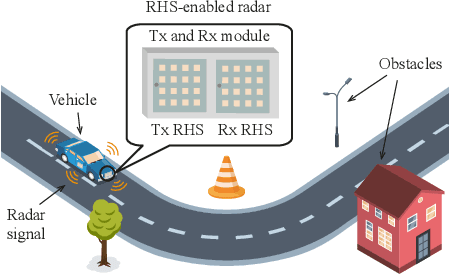
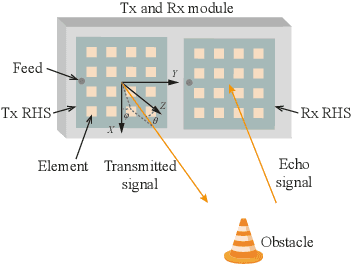
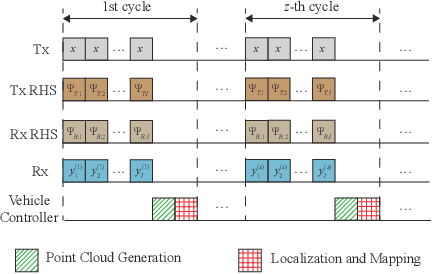
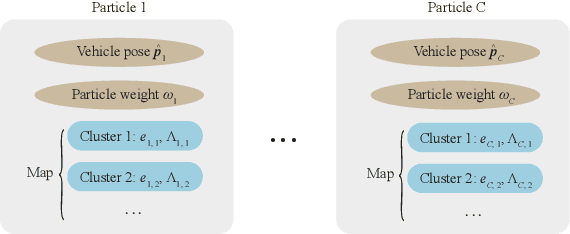
Abstract:As a crucial facilitator of future autonomous driving applications, wireless simultaneous localization and mapping (SLAM) has drawn growing attention recently. However, the accuracy of existing wireless SLAM schemes is limited because the antenna gain is constrained given the cost budget due to the expensive hardware components such as phase arrays. To address this issue, we propose a reconfigurable holographic surface (RHS)-aided SLAM system in this paper. The RHS is a novel type of low-cost antenna that can cut down the hardware cost by replacing phased arrays in conventional SLAM systems. However, compared with a phased array where the phase shifts of parallelfed signals are adjusted, the RHS exhibits a different radiation model because its amplitude-controlled radiation elements are series-fed by surface waves, implying that traditional schemes cannot be applied directly. To address this challenge, we propose an RHS-aided beam steering method for sensing the surrounding environment and design the corresponding SLAM algorithm. Simulation results show that the proposed scheme can achieve more than there times the localization accuracy that traditional wireless SLAM with the same cost achieves.
Intelligent Surfaces Empowered Wireless Network: Recent Advances and The Road to 6G
Jan 15, 2024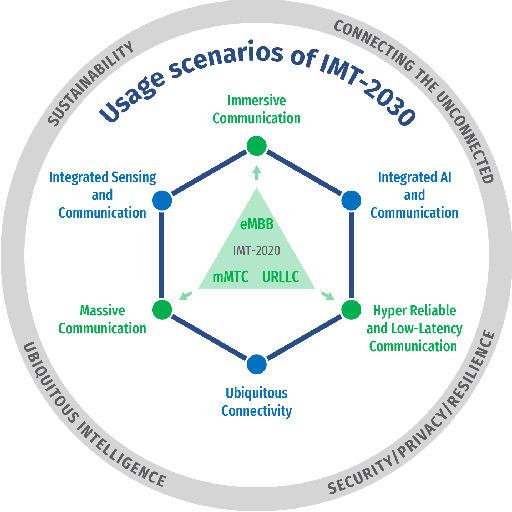
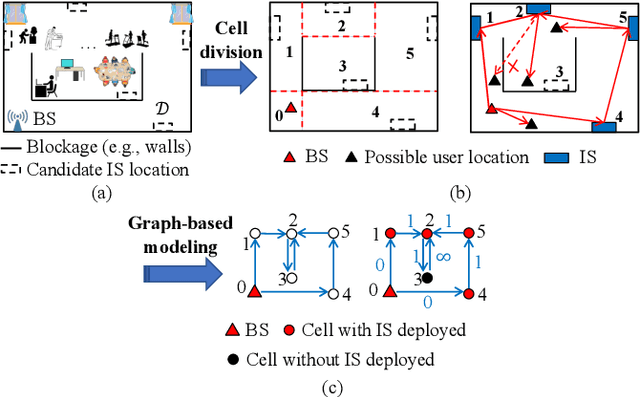
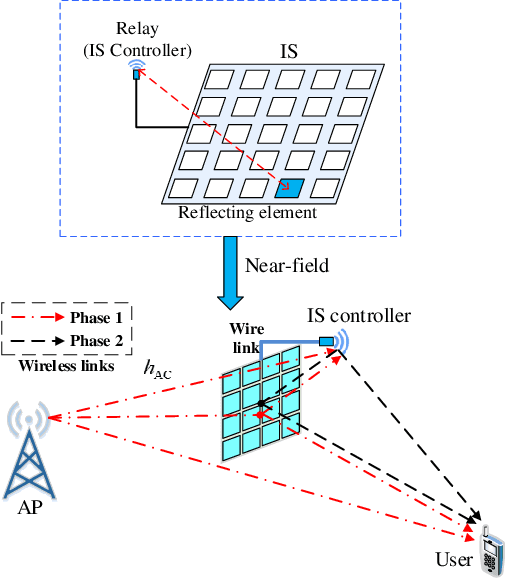
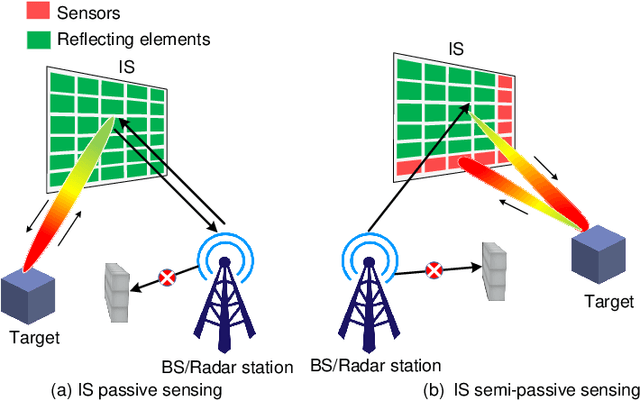
Abstract:Intelligent surfaces (ISs) have emerged as a key technology to empower a wide range of appealing applications for wireless networks, due to their low cost, high energy efficiency, flexibility of deployment and capability of constructing favorable wireless channels/radio environments. Moreover, the recent advent of several new IS architectures further expanded their electromagnetic functionalities from passive reflection to active amplification, simultaneous reflection and refraction, as well as holographic beamforming. However, the research on ISs is still in rapid progress and there have been recent technological advances in ISs and their emerging applications that are worthy of a timely review. Thus, we provide in this paper a comprehensive survey on the recent development and advances of ISs aided wireless networks. Specifically, we start with an overview on the anticipated use cases of ISs in future wireless networks such as 6G, followed by a summary of the recent standardization activities related to ISs. Then, the main design issues of the commonly adopted reflection-based IS and their state-of-theart solutions are presented in detail, including reflection optimization, deployment, signal modulation, wireless sensing, and integrated sensing and communications. Finally, recent progress and new challenges in advanced IS architectures are discussed to inspire futrue research.
Reconfigurable Holographic Surface: A New Paradigm to Implement Holographic Radio
Dec 28, 2022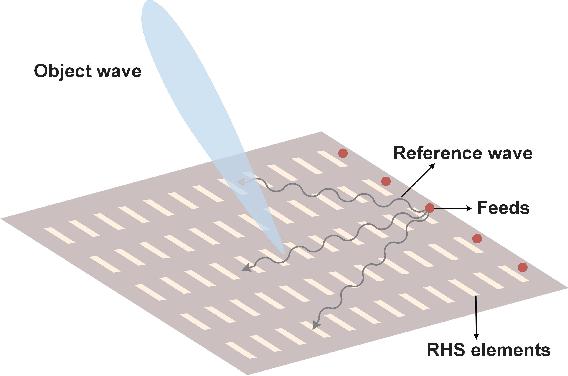

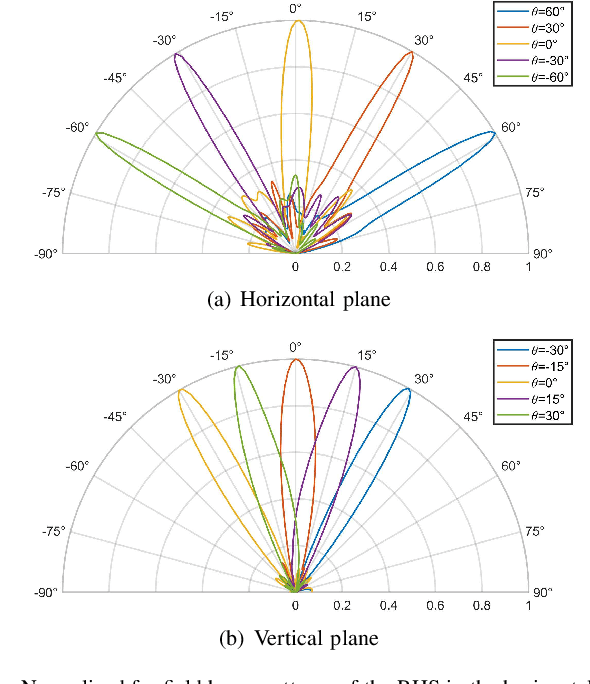
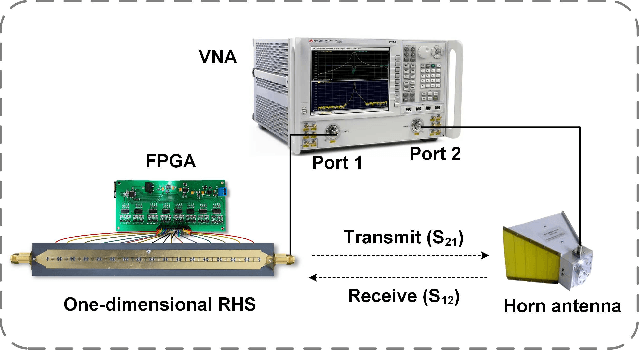
Abstract:Ultra-massive multiple-input multiple-output (MIMO) is one of the key enablers in the forthcoming 6G networks to provide high-speed data services by exploiting spatial diversity. In this article, we consider a new paradigm termed holographic radio for ultra-massive MIMO, where numerous tiny and inexpensive antenna elements are integrated to realize high directive gain with low hardware cost. We propose a practical way to enable holographic radio by a novel metasurface-based antenna, i.e., reconfigurable holographic surface (RHS). Specifically, RHSs incorporating densely packed tunable metamaterial elements are capable of holographic beamforming. Based on the working principle and hardware design of RHSs, we conduct full-wave analyses of RHSs and build an RHS-aided point-to-point communication platform supporting real-time data transmission. Both simulated and experimental results show that the RHS has great potential to achieve high directive gain with a limited size, thereby substantiating the feasibility of RHS-enabled holographic radio. Moreover, future research directions for RHS-enabled holographic radio are also discussed.
Holographic Integrated Sensing and Communications: Principles, Technology, and Implementation
Nov 16, 2022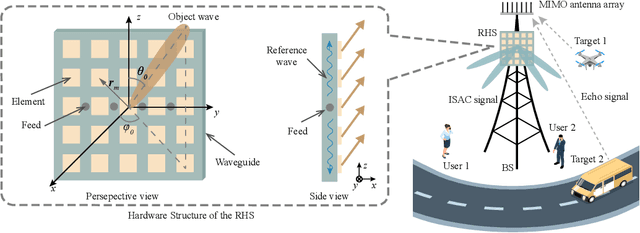
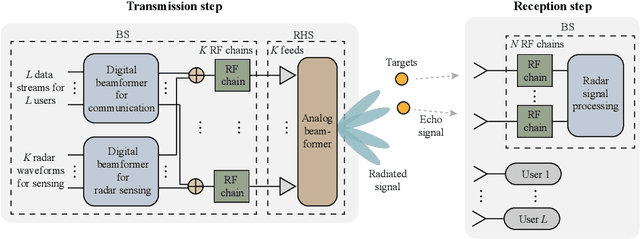
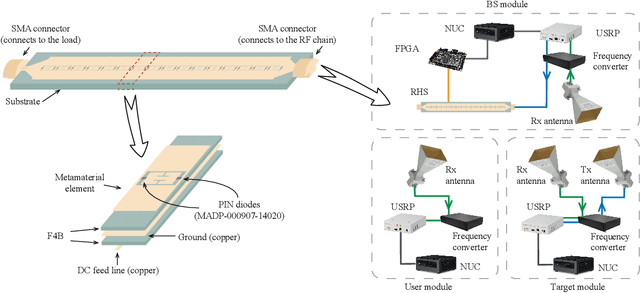
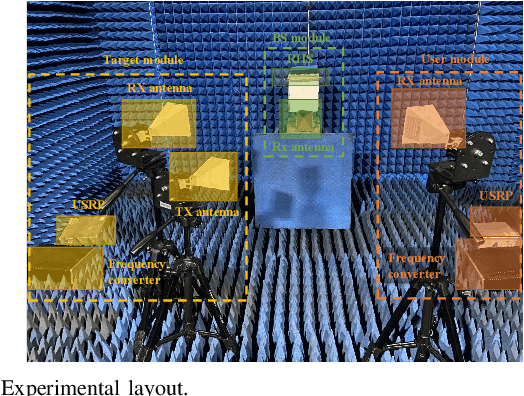
Abstract:Integrated sensing and communication (ISAC) has attracted much attention as a promising approach to alleviate spectrum congestion. However, traditional ISAC systems rely on phased arrays to provide high spatial diversity, where enormous power-consuming components such as phase shifters are used, leading to the high power consumption of the system. In this article, we introduce holographic ISAC, a new paradigm to enable high spatial diversity with low power consumption by using reconfigurable holographic surfaces (RHSs), which is an innovative type of planar antenna with densely deployed metamaterial elements. We first introduce the hardware structure and working principle of the RHS and then propose a novel holographic beamforming scheme for ISAC. Moreover, we build an RHS-enabled hardware prototype for ISAC and evaluate the system performance in the built prototype. Simulation and experimental results verify the feasibility of holographic ISAC and reveal the great potential of the RHS for reducing power consumption. Furthermore, future research directions and key challenges related to holographic ISAC are discussed.
Reconfigurable Refractive Surfaces: An Energy-Efficient Way to Holographic MIMO
Jul 06, 2022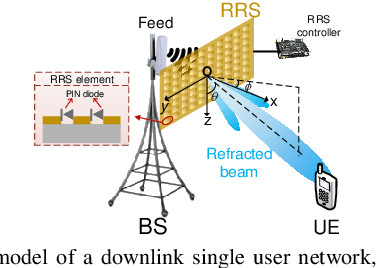

Abstract:Holographic Multiple Input Multiple Output (HMIMO), which integrates massive antenna elements into a compact space to achieve a spatially continuous aperture, plays an important role in future wireless networks. With numerous antenna elements, it is hard to implement the HMIMO via phased arrays due to unacceptable power consumption. To address this issue, reconfigurable refractive surface (RRS) is an energy efficient enabler of HMIMO since the surface is free of expensive phase shifters. Unlike traditional metasurfaces working as passive relays, the RRS is used as transmit antennas, where the far-field approximation does not hold anymore, urging a new performance analysis framework. In this letter, we first derive the data rate of an RRS-based single-user downlink system, and then compare its power consumption with the phased array. Simulation results verify our analysis and show that the RRS is an energy-efficient way to HMIMO.
Meta-material Sensor Based Internet of Things: Design, Optimization, and Implementation
Jun 26, 2022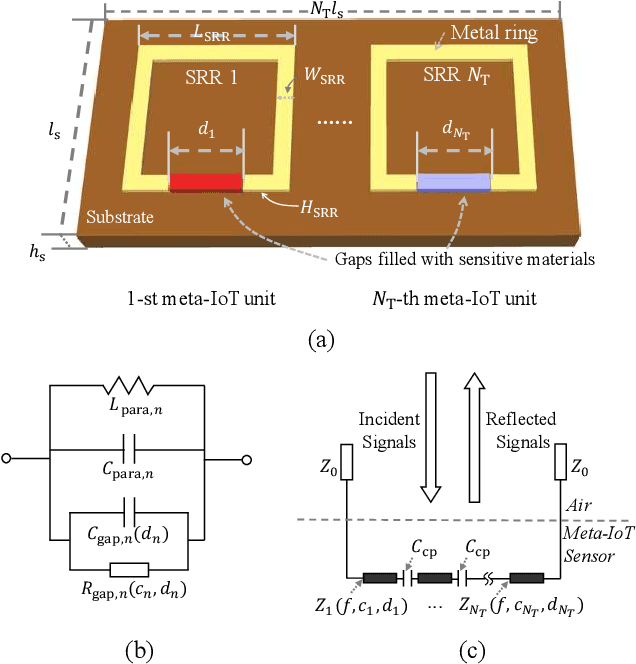
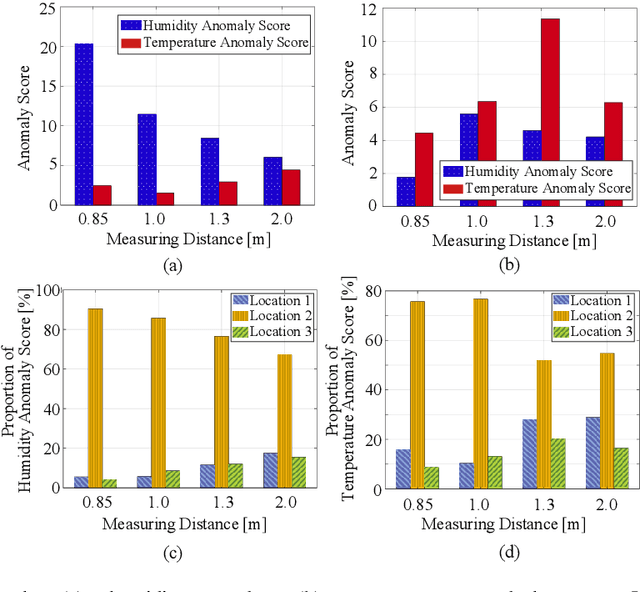
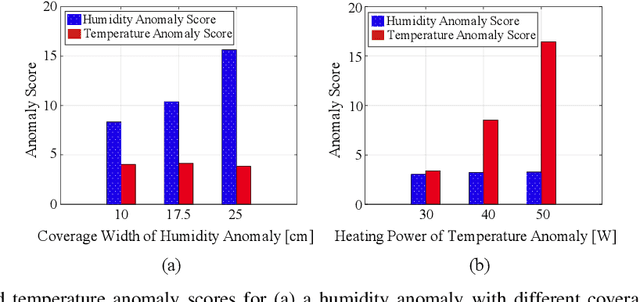
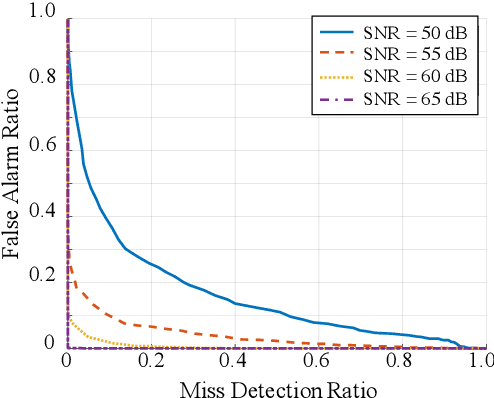
Abstract:For many applications envisioned for the Internet of Things (IoT), it is expected that the sensors will have very low costs and zero power, which can be satisfied by meta-material sensor based IoT, i.e., meta-IoT. As their constituent meta-materials can reflect wireless signals with environment-sensitive reflection coefficients, meta-IoT sensors can achieve simultaneous sensing and transmission without any active modulation. However, to maximize the sensing accuracy, the structures of meta-IoT sensors need to be optimized considering their joint influence on sensing and transmission, which is challenging due to the high computational complexity in evaluating the influence, especially given a large number of sensors. In this paper, we propose a joint sensing and transmission design method for meta-IoT systems with a large number of meta-IoT sensors, which can efficiently optimize the sensing accuracy of the system. Specifically, a computationally efficient received signal model is established to evaluate the joint influence of meta-material structure on sensing and transmission. Then, a sensing algorithm based on deep unsupervised learning is designed to obtain accurate sensing results in a robust manner. Experiments with a prototype verify that the system has a higher sensitivity and a longer transmission range compared to existing designs, and can sense environmental anomalies correctly within 2 meters.
MetaRadar: Multi-target Detection for Reconfigurable Intelligent Surface Aided Radar Systems
Feb 25, 2022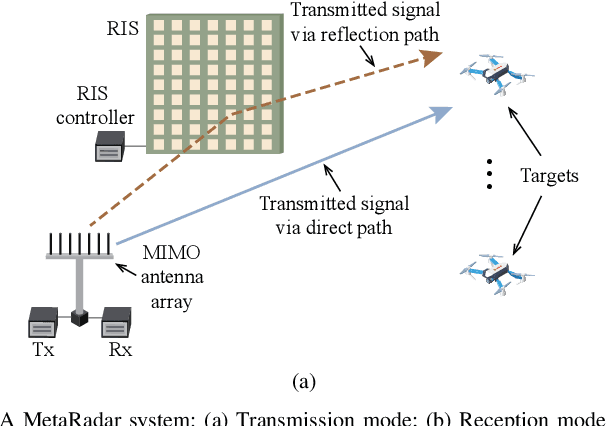
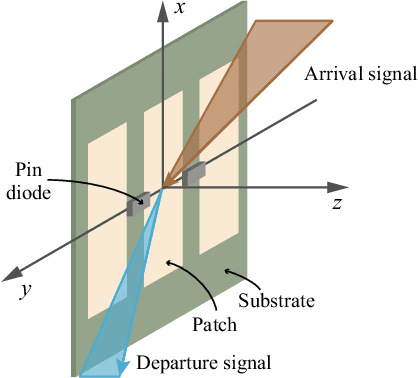
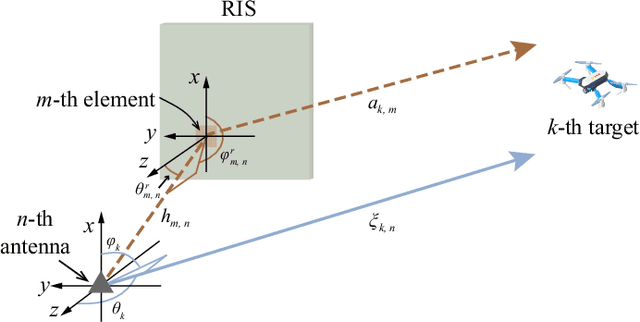
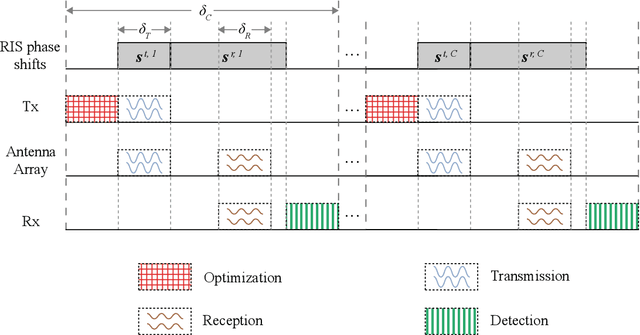
Abstract:As a widely used localization and sensing technique, radars will play an important role in future wireless networks. However, the wireless channels between the radar and the targets are passively adopted by traditional radars, which limits the performance of target detection. To address this issue, we propose to use the reconfigurable intelligent surface (RIS) to improve the detection accuracy of radar systems due to its capability to customize channel conditions by adjusting its phase shifts, which is referred to as MetaRadar. In such a system, it is challenging to jointly optimize both radar waveforms and RIS phase shifts in order to improve the multi-target detection performance. To tackle this challenge, we design a waveform and phase shift optimization (WPSO) algorithm to effectively solve the multi-target detection problem, and also analyze the performance of the proposed MetaRadar scheme theoretically. Simulation results show that the detection performance of the MetaRadar scheme is significantly better than that of the traditional radar schemes.
Capacity Maximization Pattern Design for Reconfigurable MIMO Antenna Array
Feb 12, 2022
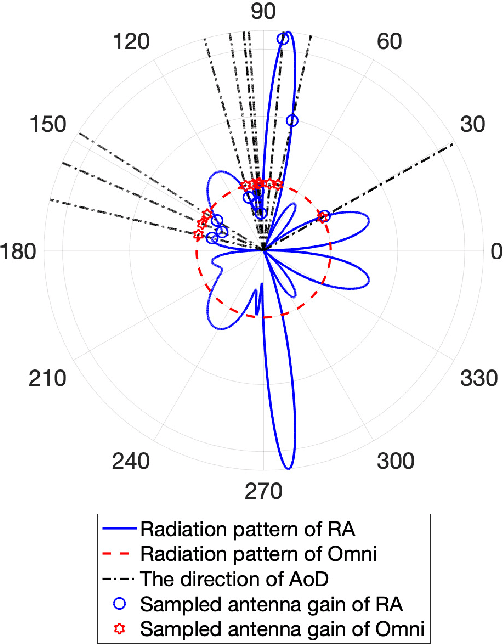
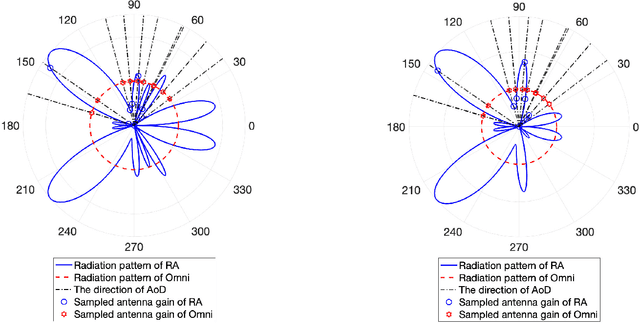
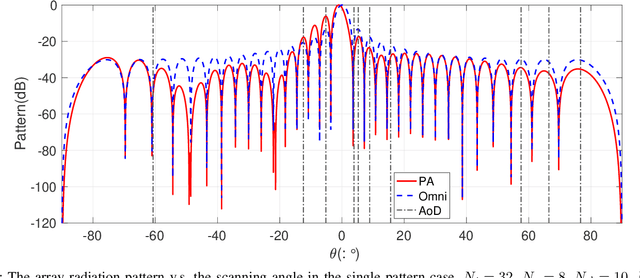
Abstract:Multi-functional and reconfigurable multiple-input multiple-output (MR-MIMO) can provide performance gains over traditional MIMO by introducing additional degrees of freedom. In this paper, we focus on the capacity maximization pattern design for MR-MIMO systems. Firstly, we introduce the matrix representation of MR-MIMO, based on which a pattern design problem is formulated. To further reveal the effect of the radiation pattern on the wireless channel, we consider pattern design for both the single-pattern case where the optimized radiation pattern is the same for all the antenna elements, and the multi-pattern case where different antenna elements can adopt different radiation patterns. For the single-pattern case, we show that the pattern design is equivalent to a redistribution of power among all scattering paths, and an eigenvalue optimization based solution is obtained. For the multi-pattern case, we propose a sequential optimization framework with manifold optimization and eigenvalue decomposition to obtain near-optimal solutions. Numerical results validate the superiority of MR-MIMO systems over traditional MIMO in terms of capacity, and also show the effectiveness of the proposed solutions.
 Add to Chrome
Add to Chrome Add to Firefox
Add to Firefox Add to Edge
Add to Edge